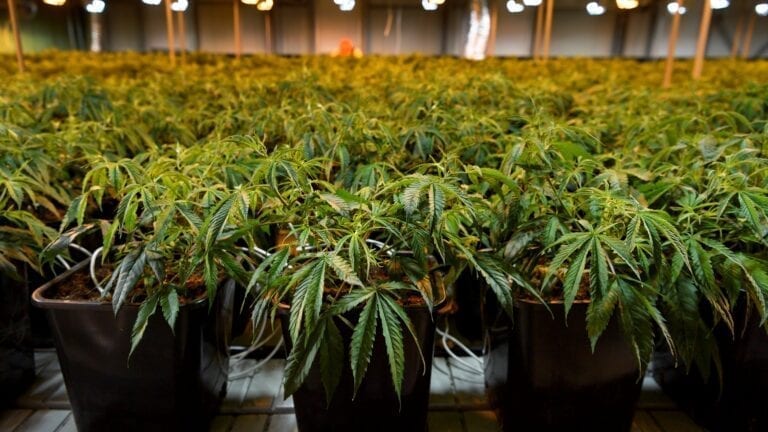Cannabis Science, Research
The cannabis boom could be good for science — and scientists
By
I’ve been a chemistry professor for 15 years and a chemist for longer than that. Through most of that time, I paid little heed to cannabis, thinking that this plant held one main chemical of interest: tetrahydrocannabinol, its psychoactive ingredient.
I now know that cannabis contains a galaxy of unexplored compounds — cannabinoids, terpenes, flavonoids, polyphenols, and more — that may well transform our understanding of plant medicine and human biology. I find this new territory inspiring.
This discovery came about after a colleague put me in touch with a cannabis genomics company that was engaged in the commercial development of rare and novel cannabinoids. Such compounds, which the Cannabis sativa plant makes in low quantities, are emerging into consumer awareness as science advances the understanding and commercial viability of these compounds. Talking with people in the company shifted my view of cannabis — and chemistry. This was relevant, applicable science in all fields: biology, chemistry, plant genetics, pharmacology, engineering, and beyond.
As a chemistry professor at Doane University in Nebraska, I led multimillion-dollar research projects involving molecular sensors, field deployable warfare detection systems, and microfluidic technology to prevent bacterial infections. I published articles in scientific journals. Yet I wanted bigger challenges. As a teacher and a researcher, I knew I couldn’t inspire others if I wasn’t inspired.
Cannabis, and what it might be able to do for human health, inspires me. And I think it can do the same for other scientists and scientists to be.
A news lens on cannabis
New legal frameworks and emerging clinical research have opened the door to research on cannabis and the compounds it makes. In just a few years, we’ve gone from having a rudimentary understanding of the plant’s compounds to discovering crucial connections among cannabinoids and human physiology. Our broader understanding of these plant compounds is boosting the STEM job market.
I spend my days working with a team of experienced bench chemists, engineers, medical researchers, and other professionals — many with a Ph.D. or M.D. after their names — exploring the biology and physiology of cannabinoids and other bioactive compounds derived from cannabis and other plants.
We’ve only begun to scratch the surface of clinical research for the medical and health applications of cannabis. This exploration can’t happen without collaboration between organic chemists, biologists, botanists, agronomy experts, medical doctors, pharmacologists, and experts in clinical trials, drug formulation, and therapeutic product design.
The potential for new and innovative medications and wellness products derived from cannabis could be huge. Promising applications include reducing or relieving pain, quelling nausea, and easing seizures or the symptoms of Parkinson’s disease. Researchers are investigating myriad other conditions that may respond well to cannabinoids and other compounds extracted from cannabis, from skin conditions to mental health issues such as PTSD and anxiety.
Cannabis-derived products are poised to become one of the largest new consumer segments in the U.S. These products tap into several rising consumer trends, including health and wellness as a lifestyle category; a growing demand for plant-based therapies and natural alternatives to prescription drugs; and a renewed emphasis on quality of life among health-conscious demographics.
As the science advances, our ability to isolate various cannabinoids and mix and match formulations could be used to create personalized health and wellness products. Still, consumer packaged goods companies will need solid research data, generated by chemists, extractors, and other laboratory professionals, to make this vision a reality.
Even as scientists work to reveal the full picture of the potential health benefits — and risks — of cannabis and cannabidiol (CBD), much remains unknown. That’s what makes this a fascinating area of scientific inquiry and commercial opportunity, but it is also why responsible scientists must rein in the misinformation and unsubstantiated claims swirling around CBD and other cannabinoids at the moment. Real science is about research and evidence — not hype.
Read more from the source: StatNews.com
Photo: FABRICE COFFRINI/AFP VIA GETTY IMAGES


